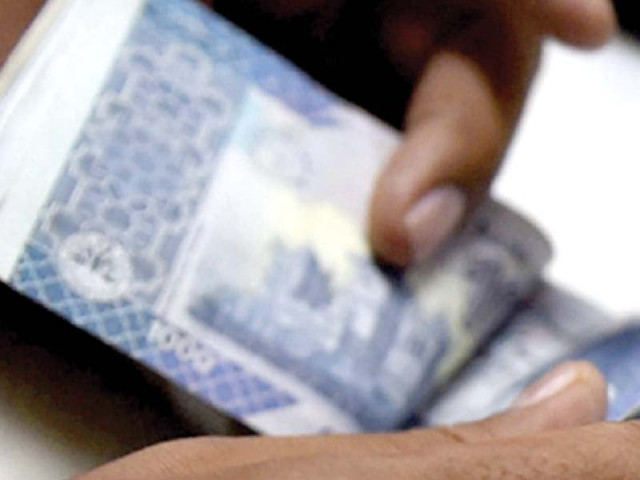Let’s keep a watch on exchange rate
Current account deficit may pile pressure on currency in FY22

The rupee gained 6% value against the US dollar in FY21 that ended on June 30. Can we expect the local currency to make further gains in FY22? Will it remain stable? Or, is it destined to fall against the greenback?
Such questions arise in the minds of common Pakistanis. In response to them, they form their opinions, which in most cases turn out to be mere speculation or wishful thinking. Movements of exchange rates cannot be predicted by ordinary analysts, let alone the common people.
Even foreign exchange experts who have, at their disposal, analytical tools to find out the possible future movement of exchange rates need accurate information about certain variables. Those variables, for example the exact amount of expected foreign funding, cannot be predicted.
So, instead of making any projections about future movements of exchange rate, let’s just see what led the rupee to gain 6% value in FY21, and then let’s look at some of the underlying external account variables that will possibly take the exchange rate in the direction it deserves.
The underlying strength of any local currency vis-à-vis foreign currencies depends largely on how the relevant country’s balance of payments looks like. The balance of payments is a statement that presents total forex inflows and total forex outflows. If this balance is negative, it simply means that on an overall basis the country is short of foreign exchange.
In first 11 months of FY21 (from July 2020 to May 2021), Pakistan’s balance of payments deficit was $3.935 billion, up from $3.445 billion in the year-ago period. With such a large deficit, it is unlikely for the rupee to remain stable without additional external borrowing – let alone make further gains in FY22.
Current account
But then several other factors would weigh on this possibility. And, one of them is the current account.
The current account, which is part of the overall balance of payments, records short-term and recurring forex inflows and outflows and, thus, plays a more decisive role in determining the exchange rate. In 11 months of FY21, Pakistan saw a minimal current account surplus of $153 million whereas in the same period of FY20, it had booked a whopping current account deficit of $4.328 billion.
The tiny current account surplus is going to evaporate in the last month of FY21 due to year-end external debt servicing. For full FY21, a current account deficit of about $2 billion is very much on the cards. Finance Minister Shaukat Tarin has publicly said that this is a likely scenario.
This means the rupee will come under pressure right from the first quarter of FY22. The pressure would be stronger if the current account remains negative throughout FY22, or at least in the first and second quarters. In June, the last month of FY21, the rupee showed continued weakness against the greenback chiefly due to year-end external debt payments. Such payments would become enlarged in FY22 simply due to the fact that the government has been amassing additional foreign debt.
The stock of government’s external debt (which is part of the total external debt of Pakistan) increased by $3.912 billion within a year, from $70.06 billion in March 2020 to $73.972 billion in March 2021, according to latest statistics released by the State Bank of Pakistan.
The pace of foreign investment via the Roshan Digital Account (RDA) and otherwise, inflow of remittances and forex earnings through exports of goods and services will, however, eventually determine how the rupee holds its strength in FY22. But at this stage any projections made in these areas may finally turn out to be off the mark because the dynamics of these sources of forex inflows can change.
Foreign portfolio investment via the RDA may continue to pour in but remittances may not grow as fast in FY22 as in FY21 due to the high base effect.
Export earnings
Similarly, forex earnings through exports of goods and services may or may not grow faster than before depending on the domestic cost of production, demand patterns in importing countries and the overall global economic situation at a time when the Covid-19 pandemic is far from over and international shipping continues to suffer delays and disruptions. In FY21, merchandise exports grew to $25.294 billion from $21.394 billion in FY20. But this impressive growth has occurred due to the low base effect because the Covid-19 pandemic had badly affected Pakistan’s exports just like everywhere in the world.
Besides, this high growth in exports has come along with an even higher growth in imports, which soared to $56.091 billion in FY21 from $44.574 billion in FY20.
The government has every right to celebrate the export growth in FY21 but it must not forget that the trade deficit also swelled to $30.797 billion ($56.091 billion imports minus $25.294 billion exports).
Now, this huge trade deficit cannot be lowered significantly in FY22 primarily because the government has set the GDP growth target at 4.8%, which is hard to come by if imports are curtailed.
This effectively means that the current account deficit will occur in FY22 – even if remittances continue to grow. The prospects for the rupee’s health in FY22 are, thus, not promising. In 11 months of FY21, the remittances grew more than 29% year-on-year to about $26.737 billion. Total remittances in the entire FY21 may touch $30 billion but even that would be lesser than – or in the best case scenario close to – the trade deficit of FY21.
So, even if remittances continue to grow in FY22, it would be either close to meeting the trade gap, or in the worse scenario not enough to do this.
Then, it seems logical to project that the current account deficit would become sizable enough in FY22 to exert pressure on the rupee. Let’s hope for the better. But let’s keep a watch on exchange rate.
The writer is an Electronics Engineer and pursuing Masters
Published in The Express Tribune, July 12th, 2021.
Like Business on Facebook, follow @TribuneBiz on Twitter to stay informed and join in the conversation.



















COMMENTS
Comments are moderated and generally will be posted if they are on-topic and not abusive.
For more information, please see our Comments FAQ